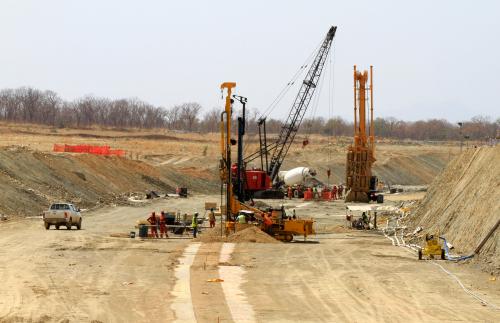The employment situation released this morning shows that 178,000 new jobs were added in November 2016.
Monthly job gains and losses can indicate how the economy is doing once they are corrected to account for the pattern we already expect in a process called seasonal adjustment. The approach for this seasonal adjustment that is presently used by the Bureau of Labor Statistics (BLS) puts very heavy weight on the current and last two years of data in assessing what are the typical patterns for each month.
In my paper “Unseasonal Seasonals?” I argue that a longer window should be used to estimate seasonal effects. I found that using a different seasonal filter, known as the 3×9 filter, produces better results and more accurate forecasts by emphasizing more years of data. The 3×9 filter spreads weight over the most recent six years in estimating seasonal patterns, which makes them more stable over time than the current BLS seasonal adjustment method.
I calculate the month-over-month change in total nonfarm payrolls, seasonally adjusted by the 3×9 filter, for the most recent month. The corresponding data as published by the BLS are shown for comparison purposes. According to the alternative seasonal adjustment, the economy added 213,000 jobs in November (column Wright SA), 35,000 more than the official BLS total of 178,000 (column BLS Official). November 2015 was a very strong jobs report and this causes the BLS’ seasonal factor to be moved up. Consequently, this has an echo effect of making the seasonally adjusted numbers weaker in November 2016. My seasonal adjustment averages over more years, and so the echo effect is smaller. This is apparently the reason why this alternative seasonal adjustment gives a somewhat stronger print in November 2016.
In addition to seasonal effects, abnormal weather can also affect month-to-month fluctuations in job growth. In my paper “Weather-Adjusting Economic Data” I and my coauthor Michael Boldin implement a statistical methodology for adjusting employment data for the effects of deviations in weather from seasonal norms. This is distinct from seasonal adjustment, which only controls for the normal variation in weather across the year. We use several indicators of weather, including temperature and snowfall.
We find a positive effect of weather on employment in November, raising employment by 16,000 jobs (column Weather Effect). Our weather-adjusted total is thus lower than the official BLS total at 162,000 jobs (column Boldin-Wright SWA). The weather effect is positive because temperatures in the relevant part of the month were warmer than usual (5°F or 2.8°C). Subtracting that out gives 162,000 jobs added.
The alternative seasonal adjustment and weather effects happen to operate in different directions this month. If one applies the weather adjustment to the Wright SA seasonal adjustment, this gives 197,000 jobs added for November 2016 (not shown in the table below).

a. Applies a longer window estimate of seasonal effects (see Wright 2013).
b. Includes seasonal and weather adjustments, where seasonal adjustments are estimated using the BLS window specifications (see Boldin & Wright 2015). The incremental weather effect in the last column is the BLS official number less the SWA number.
The author did not receive financial support from any firm or person for this article or from any firm or person with a financial or political interest in this article. He is currently not an officer, director, or board member of any organization with an interest in this article.
The Brookings Institution is committed to quality, independence, and impact.
We are supported by a diverse array of funders. In line with our values and policies, each Brookings publication represents the sole views of its author(s).








Commentary
Unusually warm November coupled with strong employment growth from a year ago distort November 2016 jobs report
December 2, 2016